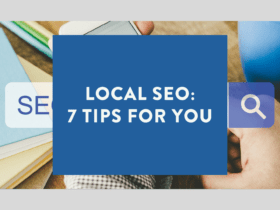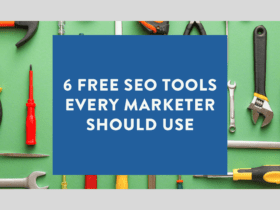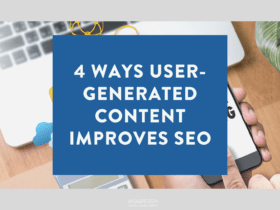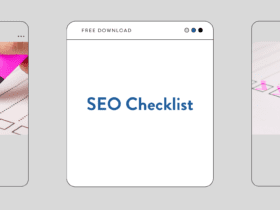Don’t be fooled, because there’s a lot more to SEO than meets the eye.
When it comes to SEO, everyone mostly talks about keywords and the text on a page, are we right?
And one of those regularly missed opportunities is image optimisation aka, image SEO.
Did you know that Google dominates the global search engine market with a whopping 92.18% of the market share? Plus, research has shown an increase in the amount of times that Google shows image results in its main web search results. That’s why while the below data is a couple of years old and US-based, we hedge our bets that it’s still very relevant today.
As you’ll see, after Google search, Google Images is the next biggest share of the pie meaning it’s a goldmine of opportunity for content creators online.
However, if you want your images to drive organic traffic to your website, then it’s not as simple as posting a pretty picture directly off your camera. If you put in the time and effort, your images can help you bring in organic website traffic and improve your website for all.
Here are 6 easy steps to get your image optimisation on point:
Use a relevant filename
Firstly, once you have the image file on your computer, you’ll want to rename it. Please don’t leave it as 123456.jpeg, trust us. Instead, rename it based on what the image is of. The file name shows in the code of the page, therefore it helps search engines understand what the image is of. Your filename will also be used in the URL for your image file on your website too.
Your filename should be brief and descriptive. Excessively long filenames can be seen as spammy by search engines alongside keyword stuffing your filenames.
Also, by giving your image files relevant names it will make it easier to search for images in your media library.
Stick to commonly supported filetypes that most browsers support, such as JPEG, GIF, PNG, BMP and WebP image formats.
Resize to appropriate dimensions
If you haven’t heard, the need for speed is a big thing in the world of websites. The faster your website is, the faster you can get your content in front of your audience’s eyes before they hit that horrid back button. Plus it’s also a Google ranking factor!
These days, search engines like Google are saying that your webpages should load in 1-2 seconds to avoid conversion or visitor loss across desktop, mobile, and tablets.
Therefore one step to reduce the file size of your images is to resize them to the max dimensions they are going to show on your website. Typically for a blog post, you’re looking at around 600-800px wide. However, this can differ per design and per CMS (content management system) too. Talk to your web developer for the right measurements for your website.
Compress!
Once you have resized your image, the next step is to reduce the file size even further by compressing it. You can use tools like Photoshop to do this, otherwise, free online tools like Optimizilla or Website Planet’s Compressor Tool can also do the trick.
If you can aim for images to be around 100-200kb or even better, under 100kb, you’re on a good track to ensuring the size of your images are not unnecessarily slowing down your webpages.
While there are plugins that can compress and ‘smush’ images for you, if you can do it yourself prior to uploading you’re reducing the need to rely on plugins. Which in the long run will be better for your website.
Add title, ALT text, and captions
Once you have added your image to your CMS, your image optimisation doesn’t stop there. If you have a WordPress website you’ll see spaces for a title, ALT text, and caption. You may not always want to use captions, that’s up to you. However, you should always add in a title and ALT text.
Google extracts information about the subject matter of the image from the content of the page, including captions and image titles. Wherever possible, make sure images are placed near relevant text and on pages that are relevant to the image subject matter. ” – Google
The image title shows in the HTML of the page, which makes it accessible by search engines. For the user, they’ll only see the title if they hover over the image (aka the tooltip).
Whilst, on the other hand, the ALT text will be displayed if an image cannot load (see example below). It is also the text which is read out on screen-readers for visually impaired website users.
To add the title and ALT text is literally so easy. As you can simply copy the filename to both fields.
Both the title and ALT text work to improve the accessibility of your website. This is so important in 2021 and beyond. Not only are you helping your SEO efforts by adding these, but you’re also making your website accessible for more people from all walks of life.
To read more about website accessibility tips, we’d highly recommend Search Engine Land’s article – 10 principles of digital accessibility for modern marketers.
Lazy loading
Once your images are on your website and are nicely optimised you might consider utilising lazy loading. Lazy loading images work by loading images as people scroll down the page, instead of loading all the images before someone can use the page. If all images load at once, it can slow down the first interaction time of the page.
Lazy loading can speed up your page making it more user-friendly and appealing to search engines.
Another way to speed up your page is to make sure your images are optimised (a.k.a. responsive) for mobile, meaning they’ll scale to the size of the screen your webpage is being viewed on. That way you won’t waste precious time downloading a desktop size image for a much smaller mobile screen.
Structured data
Structured data is glorious little pieces of code which sit around elements on your website to tell Google exactly what something is. It’s like your webpages are talking to Google, in Google’s own language.
You can implement structured data around blog posts, video objects, how-to steps, FAQs, products, courses, events and of course, images! Check out Google’s structured data guidelines for more information.
Final image SEO pro tip
Last but not least, we want to emphasise that embedding important text in images is not great for SEO. This is because not all users can access this text and this includes page translation tools which don’t work on images. To ensure the utmost accessibility of your content, make sure it’s clear in your HTML.
Enjoyed this article? Enter your email below for social media tips & tricks delivered to your inbox every Monday morning.









LET’S CONNECT